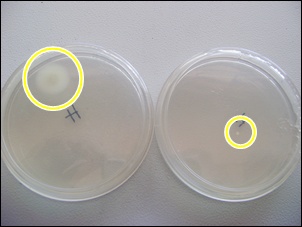SOURCES OF CONTAMINATION AND INFECTION
INTRODUCTION :
It is difficult to find a spot on the earth’s surface
where bacteria do not around. They are most abundant in the air of crowded
cities, but also are found in the air of mid-ocean. The air of high mountain
tops is comparatively free from bacteria as also the air of the Artic regions. Even
the sea water near the poles contains few microbes. Bacteria grow with great
rapidity in the warm moist climate oh the tropics, but fortunately their development
in hot countries is greatly hindered by disinfecting effect of the actinic rays
of the tropical sun.
Bacteria of the skin :Bacteria which are capable of infecting the
body cells and causing suppuration are constantly found upon the skin in
countless numbers. These round streptococci infest especially the oil glands of
the skin and the hair follicles. The so-called "skin worms" or
comedones consist chiefly of colonies of bacteria.
The etire alimentary tract harbours multitudes of
bacteria. The saliva swarms with bacteria which are ready to develop enormously
if favourable conditions are supplied and may attack the teeth and gums. So long
as the blood is maintained in a stage of high resistance the saliva will
protect it by inhibiting or hindering the growth of bacteria. regardless of their origins,most of the transient are non pathogenic and are quickly killed by various defencess against them.
OBJECTIVES :
To determined the microorganism in the air and from healthy humans .
RESULTS :
 |
| ear |
 |
| air |
 |
| hands |
 |
| normal breathing |
 |
| violent cough |
DISCUSSIONS :
Indeed bacteria, and micro-organisms of
all sorts, can be found all over the planet. Bacteria have been found to
live in deserts, where most of the year they exist as dormant spores.
Algae have been isolated from snow banks in Antarctica. Some bacteria can
live in the acid stomachs of mammals, while others live in the alkali stomachs
of insects. Microbes even have been isolated from the boiling hot
environment around deep ocean volcanoes.
Tiny forms of life have adapted to a
whole spectrum of environments. But it is important to keep in mind that
not every microorganism can live in every environment. There are
different species of plants and animals. The bacteria that live in the
rocky tundra aren't the same as those that live in hot springs. Any place that
offers the basic nutrients required for life will almost always have microbes.
"Almost always" because changes in local environments may make that
place sterile.
In the air samples, the
researchers uncovered at least 1800 diffrent types of microbes, including those
such as the diarrhea-causing Acrobacter and Ulcer-inducing Heliobacter general
that can be dangerous to human health. Previous effort to deteremine microbe
counts in the atmosphere had relied on culturing the iar to see what grew.
Normal breathing may contain
bacteria named streptococcus pneumonia because S. Pneumoniais found normally in
the upper respiratory throat and nasal passage. S.pneumonia can cause
sinusitis,septic arthritis osteomyelitis,peritonitis and endocarditis.
S.pneumonia is transmitted directly from a person through close contact via
respiratory droplets. The organism frequently colonizes the nasopharynx of healthy
people.
If we having coughing the bacteria that
exist is Haemophilus influenza and Bordetella Pertusis bacteria . In infants
and young children, H.influenza causes bacteremia,pneumonia and acute bacterial
meningitis. On occasion it causes cellulitis,osteomyelitis,epiglottitis and
infectious arthritis.for Bordetella Pertussis is spreads by air borne droplets
which are transmitted by
sneezing or coughing. Complication of pertusis incude pneumonia and ear
infection.
The bacteria normally found on your skin are what we call resident bacteria. they exist on the skin of normal healthy people and are ussually not harmful. they're always thereand can't be removed completely. other bacteria are transfered to your skin in one way or another. let's call these transient bacteria.The main pathogemic bacteria which are more likely to be found on the hands are Staphlococcus, Corynebacteria ,Streptococcus, E.coli, Myobacteria and Haemophilis,all in different concentrations. these bacteria are also found in other parts of the body like nose,eyes,mouth,gut and vagina,though the rate of incidence might vary.The first two types of bacteria are pathogens that are rensponsible for causing a large part of bacterial infectious in humans. these are found in almost all parts of the body, transmitted mainly from nasal membranes to other hosts. Staphylococcus cause boils, urinary tract infections and in serious casses food poisoning. Corynebacteria is commonly known to cause acne,and also associated with diptheria and more commonly in people using prosthetic diet.different Streptococcus strains caused varied infections affecting throat, lungs in case pneunomia, are rensponsible for causing dental carries, and can seriously damage the heart and kidney also.
CONCLUSIONS :
Bacteria have exploding populations and can reproduce every 20
minutes. There are so many bacteria that you have on your body and at the air. Bacteria
might be good or bad, depending on what they do to you or for you, and they are
here to stay. Some bacteria spend their lives in the small folds of the skin on
hair or under fingernails. Others cause body odor. Still called pathogens,cause
disease.
Microorganisms
can enter the air when a human or animal sneezes, or by the wind picking up the
light particles and blowing them to humans. When a human sneezes microorganism
leave the lung at around 200 mile per hour. Some og the microorganism that are
growing in the mucus in the respiratory tract enter the air with the moisture
particles that are sneezed out of the lungs. These microorganism can be
breathed into the lung of another person and that person coud get sick.
No comments:
Post a Comment